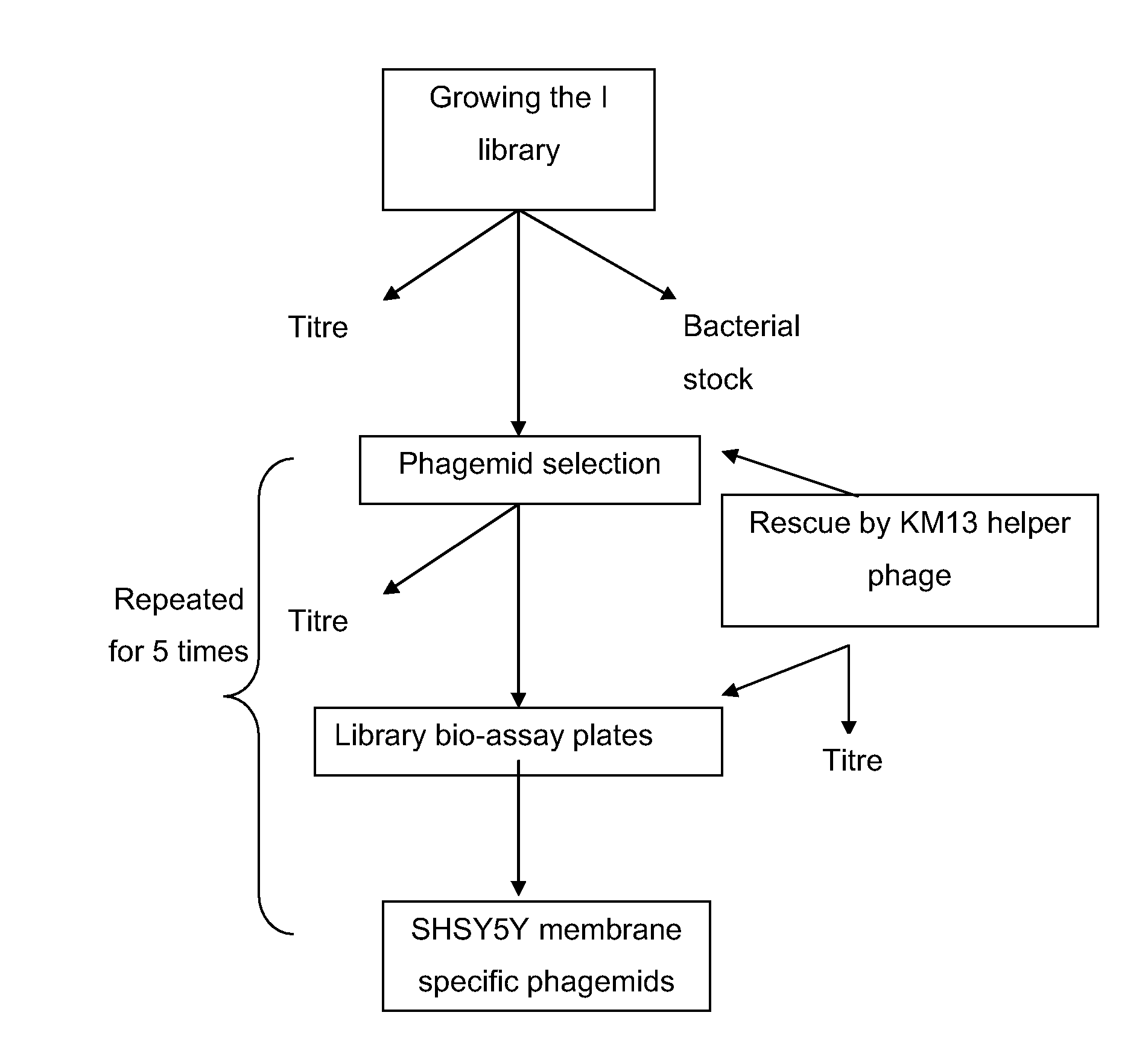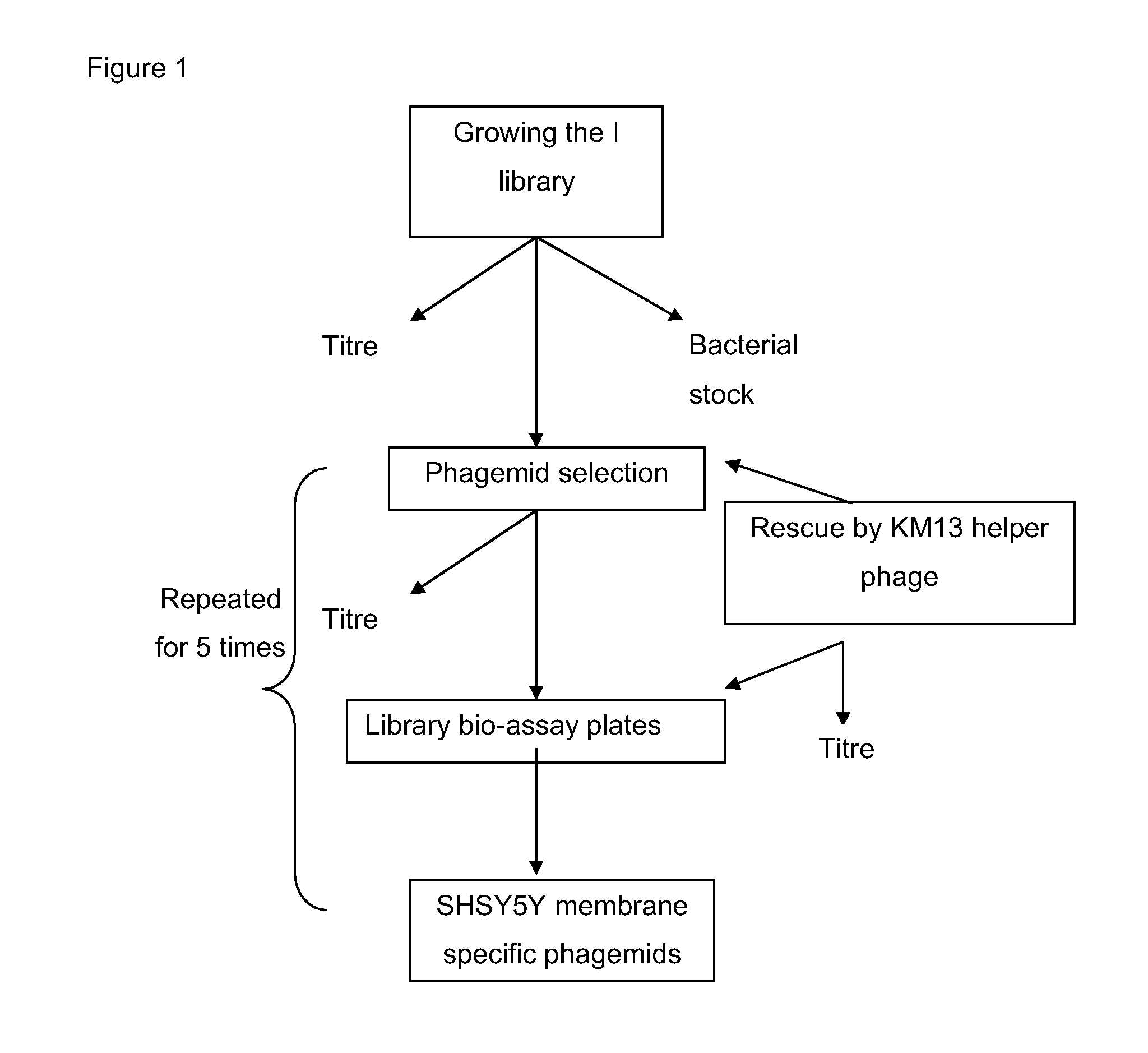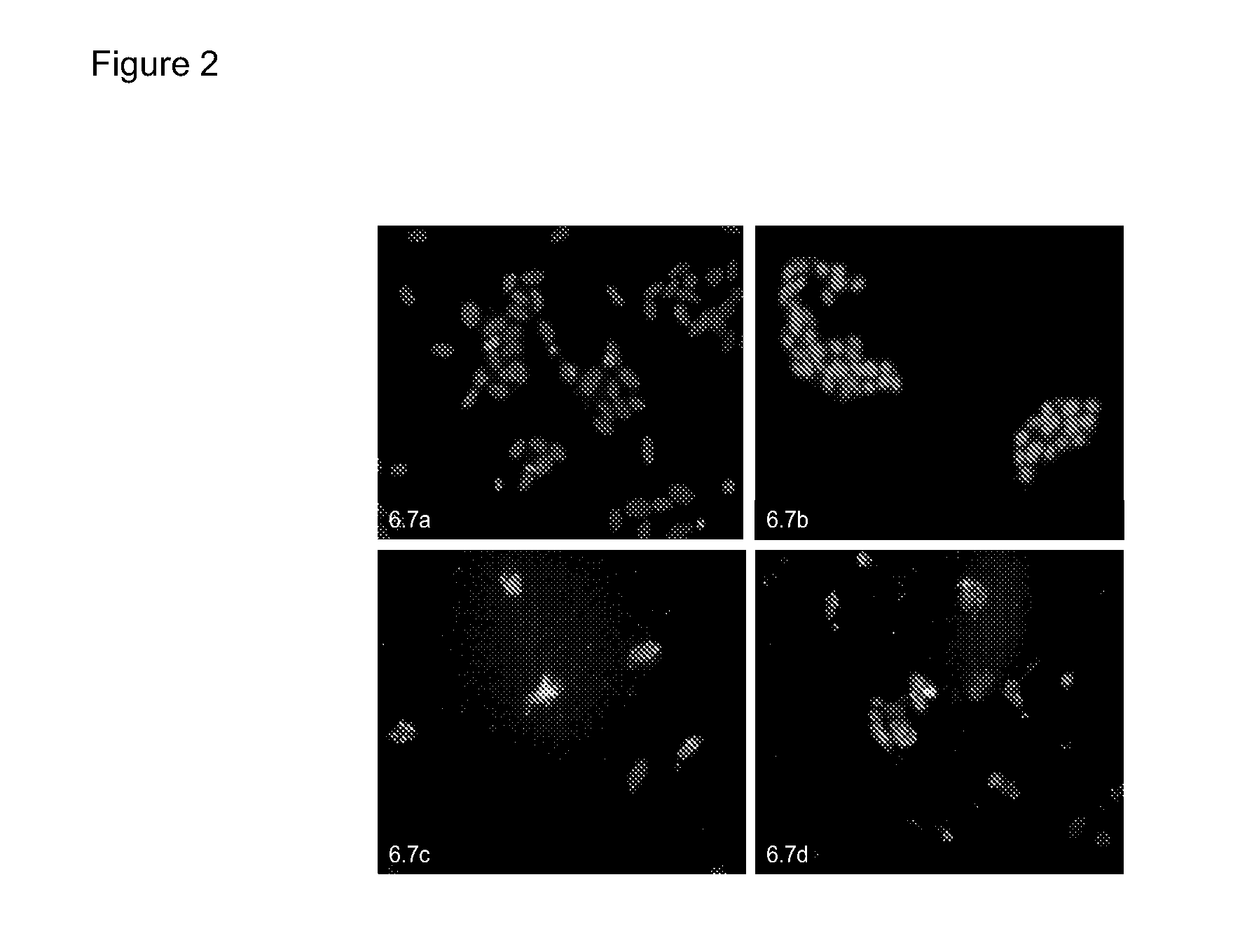Detection of cell surface binding molecules using a phage display blocking assay
- Summary
- Abstract
- Description
- Claims
- Application Information
AI Technical Summary
Benefits of technology
Problems solved by technology
Method used
Image
Examples
examples
[0152]The Tomlinson I library, phage KM13 (Kristensen and Winter, 1998), TG1 cells and an anti ubiquitin scFv (phagemid) were obtained from MRC HGMP resource centre (Cambridge).
[0153]Construction of Tomlinson I+J Libraries
[0154]These libraries are constructed in the pIT2 vector and comprise over 100 million different single chain variable fragments (scFv fragments) cloned into an ampicillin resistant phagemid vector and transformed into TG1 E. coli cells. scFv fragments comprise a single polypeptide with the VH and VL domains attached to one another by a flexible Glycine-Serine linker. The antibody libraries are expressed on KM13 particles which have a 21-residue peptide comprising a protease cleavage site, introduced into the flexible linker between the second and third domains of the minor coat protein pill of filamentous bacteriophage. The protease cleavage site allows the phage to become sensitive to cleavage using a range of proteases such as trypsin (Krist...
PUM
| Property | Measurement | Unit |
|---|---|---|
| Surface | aaaaa | aaaaa |
| Biological properties | aaaaa | aaaaa |
| Fluorescence | aaaaa | aaaaa |
Abstract
Description
Claims
Application Information
 Login to View More
Login to View More - R&D
- Intellectual Property
- Life Sciences
- Materials
- Tech Scout
- Unparalleled Data Quality
- Higher Quality Content
- 60% Fewer Hallucinations
Browse by: Latest US Patents, China's latest patents, Technical Efficacy Thesaurus, Application Domain, Technology Topic, Popular Technical Reports.
© 2025 PatSnap. All rights reserved.Legal|Privacy policy|Modern Slavery Act Transparency Statement|Sitemap|About US| Contact US: help@patsnap.com



